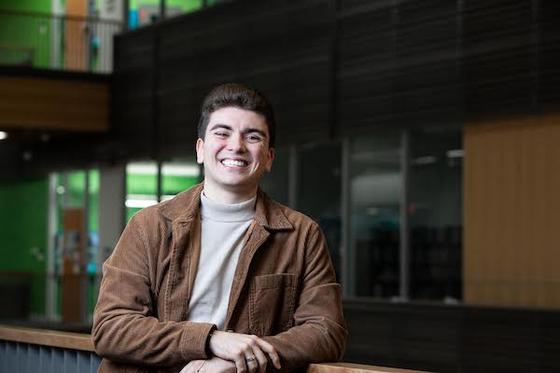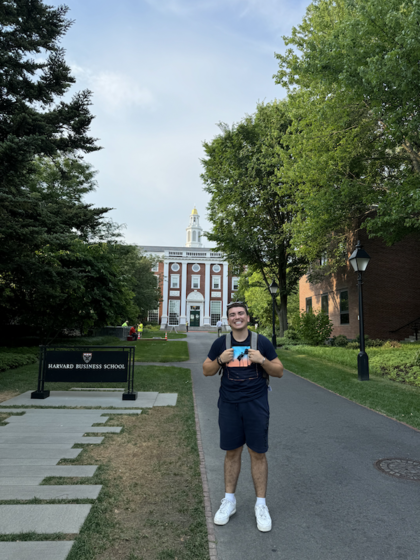George Mason University bioengineering student Berk Kasimcan spent his summer internship working on a proof of concept for what could be described as sunglasses for buildings.
Kasimcan is working alongside Harvard University psychology students and second-year PhD engineering and computing student Raphael Kay as they attempt to alleviate the damage that buildings experience throughout the years from radiation, heat, cold, and light.
“What if we create this glass system that has various liquids inside and is able to adjust the building temperature or the [impact of] the direct UV light?” Kasimcan said. “This research would be especially helpful for newer buildings that are made of mostly glass.”

Kasimcan’s internship took place in two lab locations on Harvard’s campus —the Aizenberg Biomineralization and Biomimetics Lab in the Science and Engineer Complex and the Center for Nanoscale Systems. The research being conducted is fairly new and led by Kay, who is also one of Kasimcan’s mentors.
“The environments are super-fast paced and each university has their own culture when doing research, so I get to learn a lot of different ways to conduct important research,” said Kasimcan.
The Aizenberg lab is similar to the MIX here at George Mason, but with more of a focus on engineering. The Center for Nanoscale Systems is where students work on decomposition and microscopic materials too small to be seen unaided by the human eye and requires researchers to wear full-body clean room suits, Kasimcan explained.
The team built a total of four setups this summer to measure how much light and heat is getting deflected, and how much heat transfer is present.
“Our goal for this summer is to build test benches. Once we perfect our devices and formulas, we will actually be able to use the test benches to get reliable results on light and heat detection,” said Kasimcan, who is enrolled in George Mason’s accelerated master’s bioengineering program.

Kasimcan, who is in the Honors College, credits the mentorship he received at George Mason from associate professor of bioengineering Shani Ross and assistant professor of bioengineering Quentin Sanders, as well as his senior design project experience, for helping to prepare him for this internship.
Working with Sanders in his Intelligent assistive technology, Neuromuscular control and Physiology, Wearables and Rehabilitation Robotics (ImPoWeR) lab for a year was great experience, Kasimcan said. “I worked on research addressing rehabilitation, robotics, and developed exoskeletons and prosthetic devices for individuals that have experienced a neurological injury or amputation.”
The feeling was mutual, according to Sanders. “It was a pleasure working with Berk. With his work ethic, intellectual curiosity, and general interest in the biomedical sciences, I can see him working at a top tier company within the health care industry,” said Sanders.
“I’m sure he’ll do great wherever he ends up. I wouldn't be surprised at all if I looked up one day and Berk was the leading scientist in the research and development division of a huge company,” he added.
Kasimcan, along with his peers, spent a year working on hydrogel research with the goal of creating a water filtration system in the event of an emergency so communities can access clean water.
“It’s not something we can use 24/7 unfortunately, but when it comes to emergencies, it was a pretty useful device,” said Kasimcan.
For their efforts, Kasimcan and his teammates won multiple awards including two People’s Choice Awards for engineering from George Mason’s Bioengineering Department and 2nd Place in a Star-Tides Poster Competition.
Kasimcan graduated with a bachelor of science from George Mason in spring 2024 and is currently pursuing his master's in engineering.
In This Story
Related Stories
- August 22, 2025
- August 14, 2025
- January 16, 2025
- September 16, 2024
- September 6, 2024
